
AR-15 calibers and cartridges are legion. Finding the right one is a matter of matching it to the job you want your rifle to perform.
What Are the AR-15 Cartridge Choices:
- .204 Ruger
- .223 Remington
- .22 Nosler
- .224 Valkyrie
- .25-45 Sharps
- 6.5 Grendel
- 6.8 SPC
- .300 Blackout
- .300 Ham’r
- .30 Remington AR
- .350 Legend
- .450 Bushmaster
You want to buy an AR-15 but can’t decide for which cartridge it should be chambered. Well, maybe this rundown will help. The key to getting the right cartridge for an AR-15 is to perfectly match the cartridge to the jobs you’re going to ask the rifle to perform. Choose wisely, or you might have to choose again. However, in the end, choosing more than one might actually be the best and the right answer.
The .204 Ruger
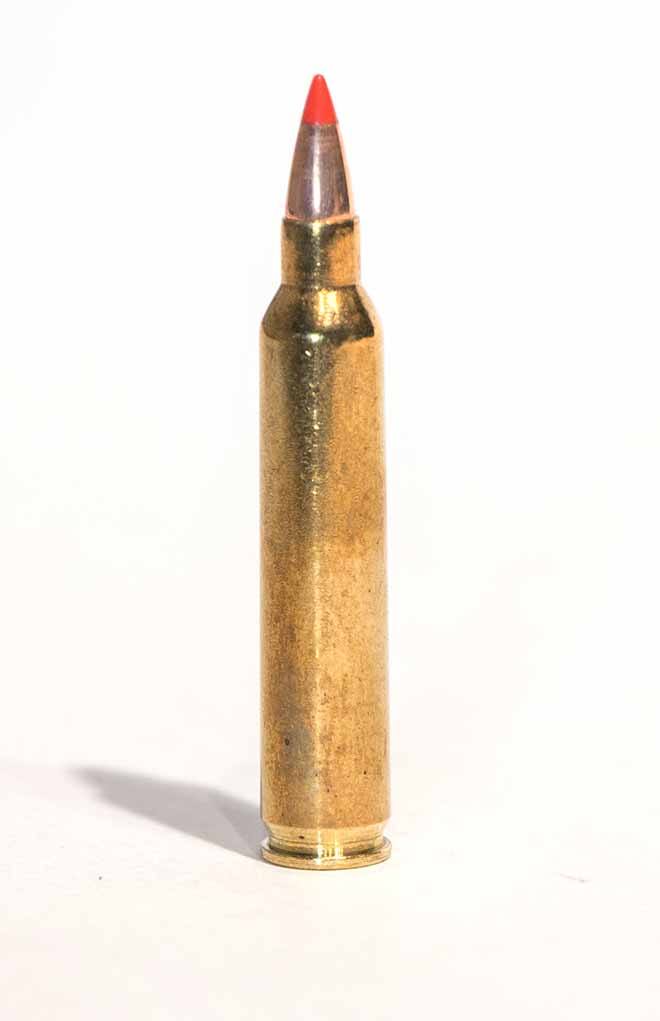
Introduced by Hornady in 2004, the .204 Ruger’s parent case is the .222 Remington Magnum. It’s loaded with a 0.204-caliber bullet typically weighing between 32 and 45 grains. Intended as a fast-stepping varmint cartridge, it’s capable of pushing the lightest bullet weights to well beyond 4,000 fps. Early on, it seemed that the .204 Ruger would be very popular, but a lack of rifles available for it has led to a diminished attractiveness.
These days, you’ll have trouble finding complete rifles chambered for the .204 Ruger, with the DPMS LR-204 being one of the few currently available. If you want one, your best bet is to build your own rifle or upper, which, given the modularity of the AR-15 platform, is not all that hard to do. The .204 Ruger is ideal for prairie dog shooting and target work. Given the minimal recoil, it’s especially pleasing to watch your bullets impact these little vermin.
Savage AccuFit Dishes Up Affordable Accuracy
The .223 Remington
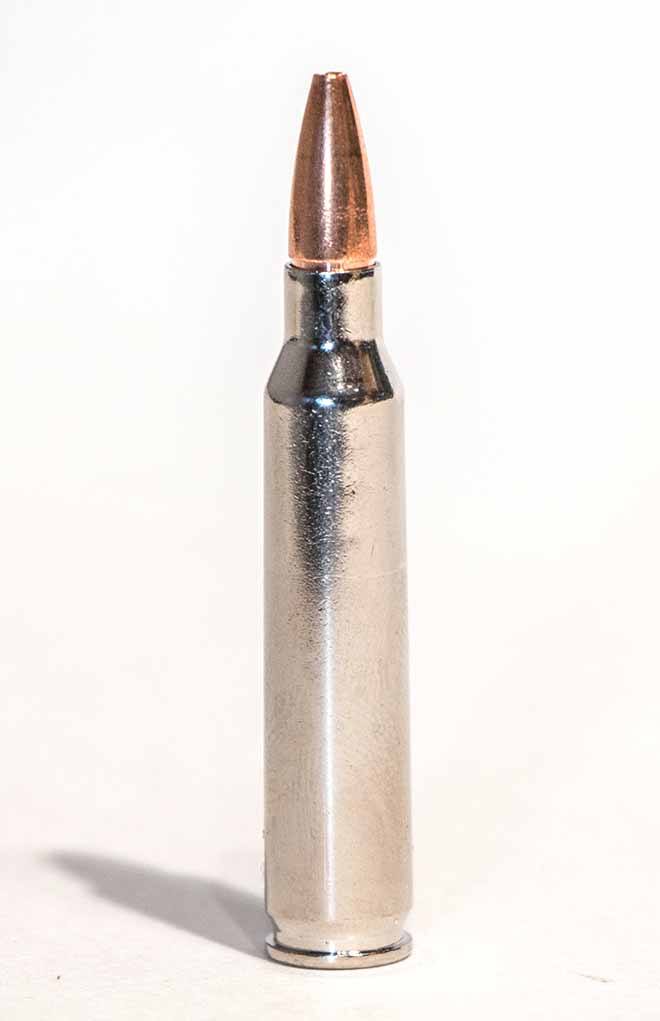
Because the .223 Remington is unquestionably the premier cartridge for the AR-15, you’ll find more ammunition options for it than any other. To some extent, this cartridge is interchangeable with the 5.56 NATO. However, 5.56 NATO ammunition should not be fired in rifles marked “.223 Remington.” On the other hand, feel free to shoot .223 Remington ammunition in a 5.56 NATO rifle.
With a wide selection of factory loads, and with bullets ranging in weight from 35 to 75 grains and available in many styles from frangible to monolithic, the .223 Remington is the most versatile AR-15 cartridge. It’s ideally suited for varmints, home defense and even game as large as feral hogs and deer (bullet selection is paramount).
Get On Target With More AR-15 Knowledge
- Affordable AR-15 Rifles – A Buyer's Guide
- AR-10 vs AR-15 – How Stoner’s Rifles Stack Up
- Upgrade Your AR-15 with the Best Parts & Accessories
- AR-15 Lower Building Tips – Putting The Internals Together
- How it Works: AR-15 Upper Assembly
- Buyer's Guide: Top AR Pistol Braces
- AR Pistol Reviews – Best Options for Any Budget
The .22 Nosler
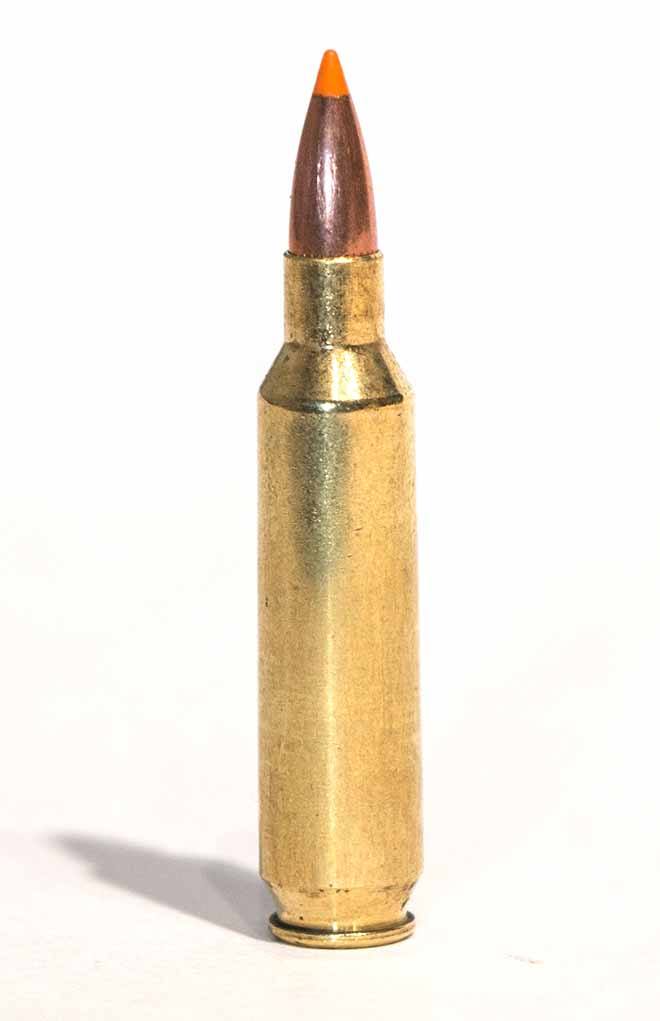
Based on the 6.8 SPC case and necked down to .224 caliber — but with a rebated rim the same size as the .223 Remington — it’s easy to convert an AR-15 in .223 Remington/5.56 NATO to .22 Nosler. All the conversion requires is a new barrel and 6.8 SPC magazines. Unfortunately, Nosler is the only company offering ammunition for this cartridge.
With almost 25 percent more powder capacity than the .223 Remington, the .22 Nosler has the ability to push bullets devilishly fast. Depending on the bullet style, it can be argued that the .22 Nosler is the fastest- and flattest-shooting AR-15 cartridge. It will push a 55-grain E-Tip bullet to 3,300 fps, which is more than sufficient for deer hunting. The 55-grain Ballistic Tip at about the same speed is ideal for varmints, coyotes and such.
The .224 Valkyrie
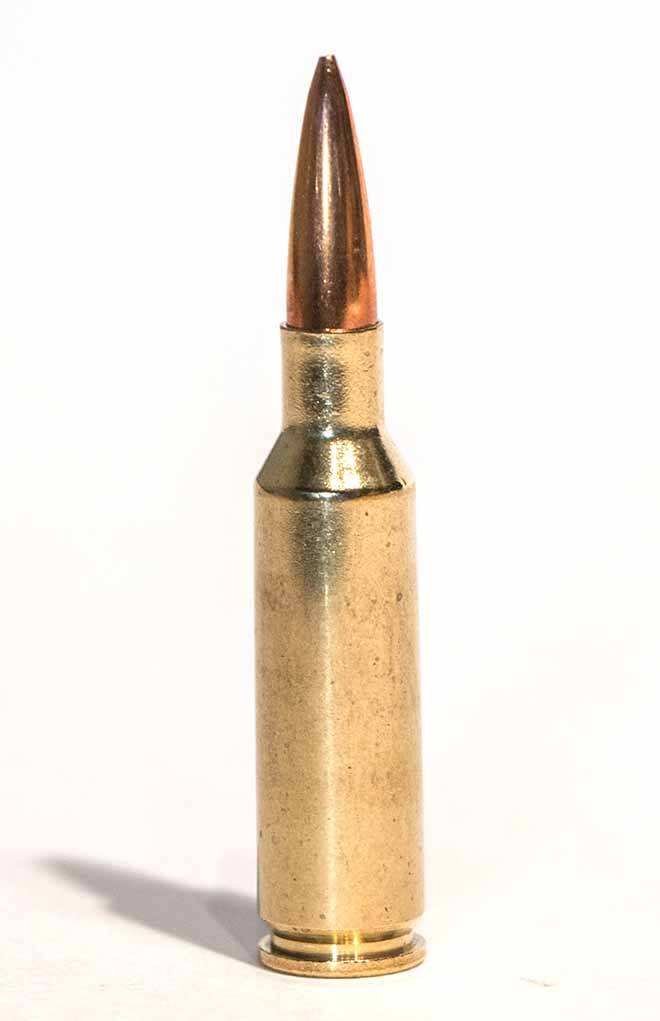
With a case shape inspired by the 6.5 Creedmoor, the .224 Valkyrie is one of the newest AR-15 cartridges. The 75-grain Hornady hollow-point load has a muzzle velocity of 3,000 fps, and the 90-grain Federal Sierra Match King load will leave the muzzle at 2,700 fps. The first is ideal for varmints, and the latter is great for long-range shooting. However, Federal also offers a 90-grain Fusion soft-point load that will work splendidly at extended ranges for hogs, deer and pronghorn.
Like the .22 Nosler, the .224 Valkyrie is based on the 6.8 SPC case. However, the Valkyrie retains the 6.8’s 0.422 rim diameter; but the case is highly modified to work with long and slender bullets with high ballistic coefficients. The cartridge seems to be gaining lots of traction with those who wish to push the distance with an AR-15. And, with a wider variety of loads from several sources, it looks to soon outperform the .22 Nosler, at least from the standpoint of sales.
The .25-45 Sharps
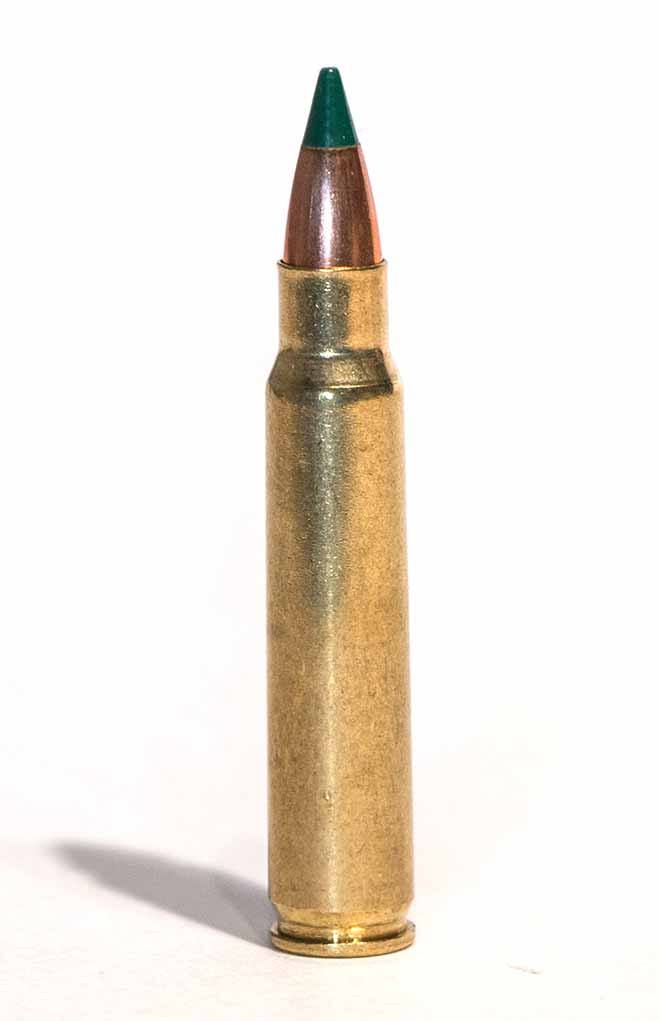
Created in 2008 to make the AR-15 big-game legal in every state that allows bottlenecked rifle cartridges for deer hunting, the .25-45 Sharps is nothing more than a .223 Remington case necked up to .257 caliber. It approaches the ballistics of the time-proven .250 Savage with an 87-grain bullet, and it allows the AR-15 to be used in the few states that will not allow .224-caliber cartridges for deer hunting.
The .25-45 never really got off to a good start commercially; no major manufacture is offering ammunition for it, and what little popularity it had seems to be in decline. Regardless, it’s an ideal cartridge for the AR-15. It offers varmint and big-game capability and minimal recoil, and because it uses the .223 Remington case, handloaders should never be short of ammunition.
The 6.5 Grendel
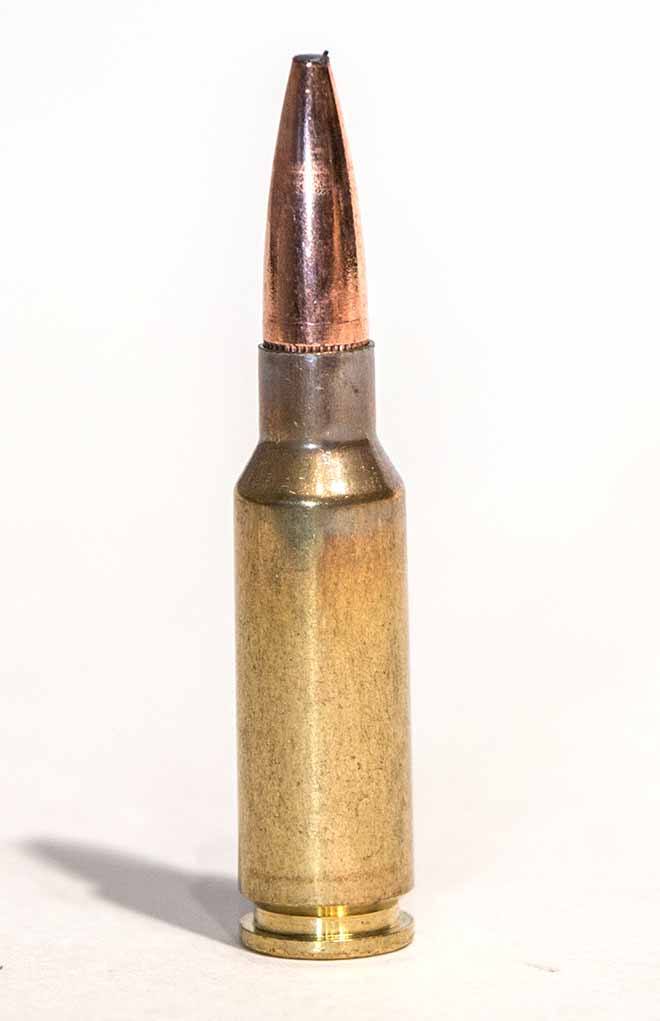
If there were ever a cult cartridge for the AR-15, the 6.5 Grendel is it. Based on the .220 Russian/7.62×39 Soviet case, the 6.5 Grendel was introduced in 2003 by Bill Alexander of Alexander Arms. It’ll push a 120-grain bullet to 2,700 fps; and because of the naturally high ballistic coefficient of 6.5-caliber bullets, the Grendel shoots very flat.
Interestingly, the Grendel has never really caught on with mainstream AR-15 aficionados. This is somewhat perplexing, because it’s one of the best multipurpose cartridges for the platform. And, factory ammo is offered by a variety of manufacturers, such as Hornady, Federal, Alexander Arms and Underwood Ammunition. If you’re looking for a do-all AR-15 cartridge, the Grendel will suffice … and you can belong to a cult group that thinks it’s the best cartridge of any kind that has ever been invented.
The 6.8 SPC
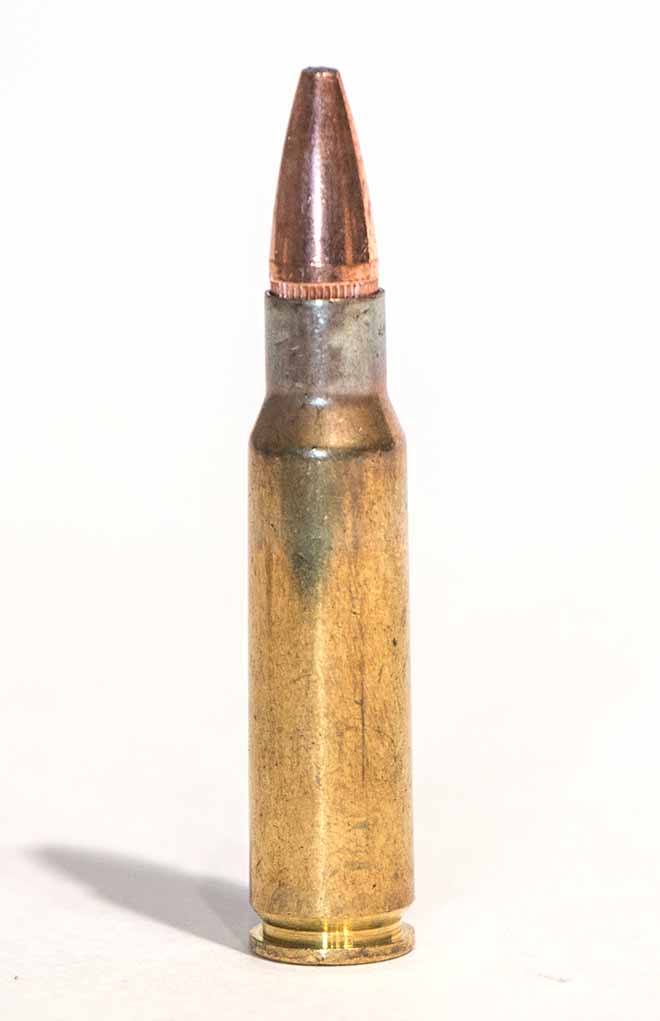
Designed between 2002 and 2004, the 6.8 SPC was created by Remington with assistance from the Army Marksmanship Unit to possibly replace the .223 Remington as the primary small arms cartridge for the military. Initially, it was very popular, and those who used it claimed it was superior to anything else that could be fired from an AR-15.
However, as of late, the popularity of the 6.8 SPC has waned. And, too, now there’s a 6.8 SPC II version with different chamber dimensions — and this totally confuses potential buyers. (6.8 SPC ammunition shoots just fine in a rifle with a 6.8 SPC II chamber.) Ballistically, the cartridge cannot compete with the more modern .224 Valkyrie, which will handle much more-aerodynamic bullets.
The .300 Blackout
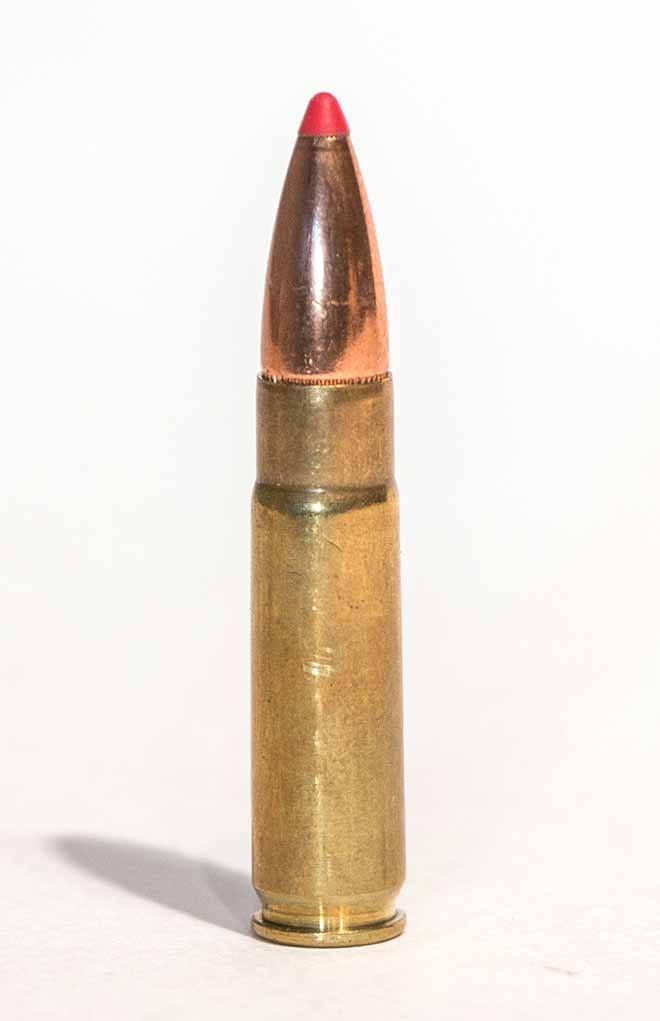
Partially because of its name, and partially because of its ability to provide fantastic subsonic performance, the .300 Blackout was at one time very popular. To some extent, it still is, but mostly in its subsonic form. Shooters soon found that obtaining one-hole, .300 Blackout accuracy — with both supersonic and subsonic ammunition — was near impossible.
One thing the .300 Blackout does have going for it is minimal recoil with supersonic ammunition. This makes it a great cartridge for young or new shooters who are looking to hunt with the AR-15. And, there’s a good selection of supersonic hunting loads to choose from. However, the true forte of this cartridge is subsonic work, and there, it reigns as the supreme subsonic cartridge for the AR-15.
The .300 Ham’r
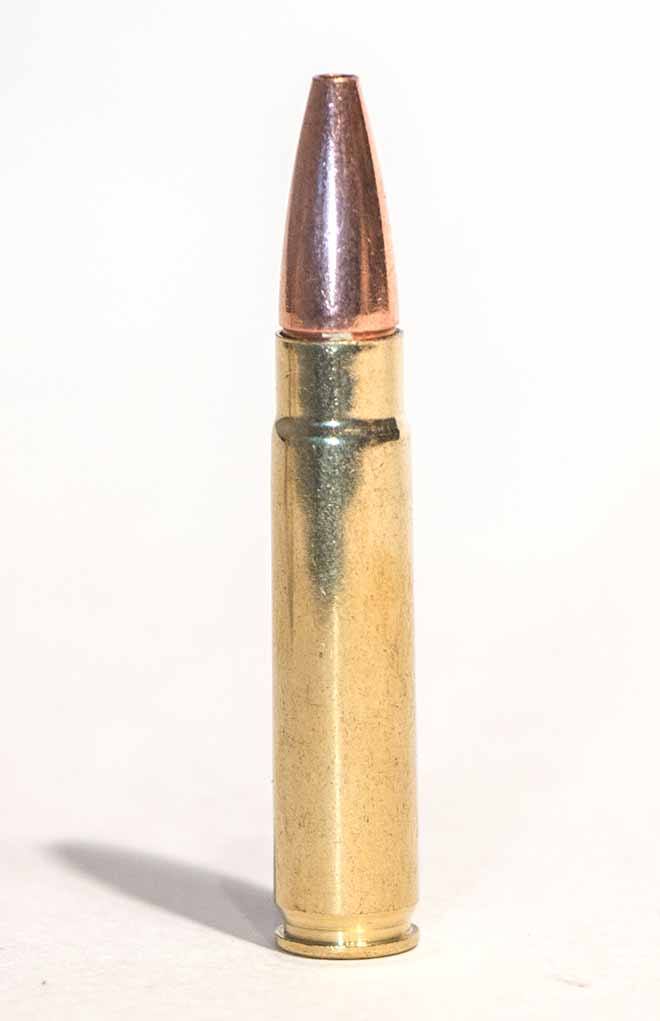
Introduced in 2018 by Wilson Combat, the .300 Ham’r might be the best general-purpose cartridge for the AR-15 platform. It essentially duplicates the external ballistics of the .30-30 Winchester, which makes it suitable for most of the big game on the planet … at least at modest ranges. Wilson Combat offers a wide variety of factory ammunition for the .300 Ham’r, with loads that are suitable for varmints, personal protection and big-game hunting.
Right now, the cartridge’s weakness is that ammunition is only available from one source; and, given its .30-30-like ballistics, it’s only suited for moderate-range engagements — regardless of the target. Still, unless you want to play on the other side of 300 yards, it’s a fantastic multipurpose cartridge for the AR-15.
The .30 Remington AR
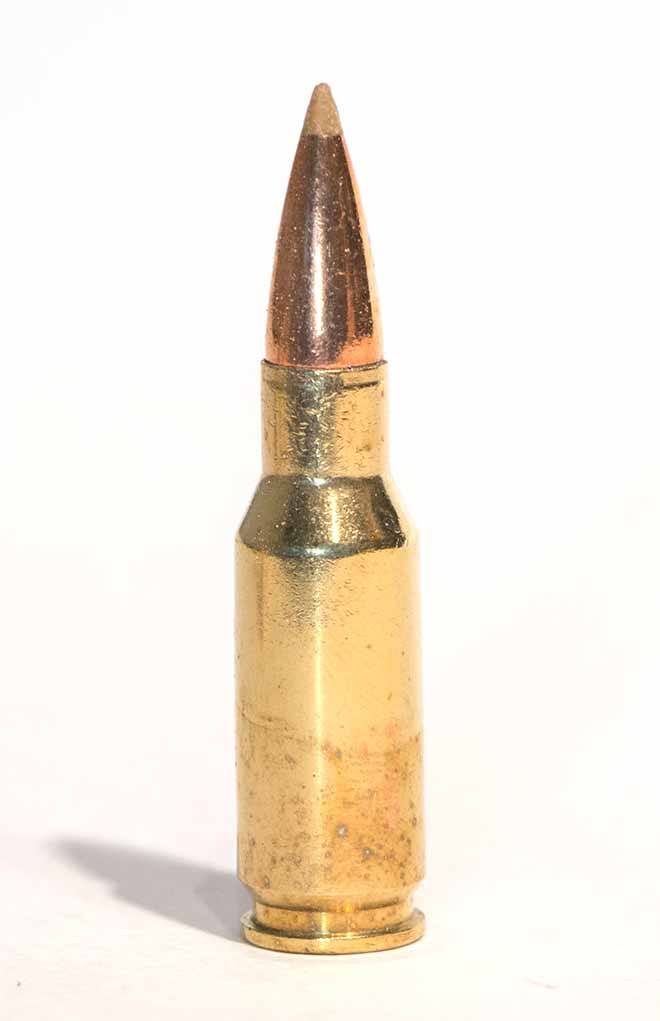
Introduced by Remington in 2008, the .30 Remington AR is, indeed, the best big-game cartridge for the AR-15. The problem is that Remington screwed it up, and few could see past what they feared was a looming ban on their favorite rifle. First, it was introduced right about the time the AR-15 craze hit America, and the masses were only — mostly — buying ARs chambered for the .223 Remington. Then, Remington did a terrible job marketing the .30 Remington AR. For example, it released external ballistic data that listed the cartridge’s 300-yard velocity as its muzzle velocity. Not good!
The truth is that the .30 Remington AR — which requires a specially configured bolt — will push a 125-grain bullet to 2,800 fps and a 150-grain bullet to almost 2,600 fps. This level of performance is unmatched by any cartridge compatible with the AR-15 platform, and it nearly duplicates the performance of the respected .300 Savage. Sadly, no .30 Remington AR AR-15s are currently being produced … and good luck finding factory ammo. To make it even less appealing, you cannot make .30 Remington AR cases from any thing else.
The .350 Legend
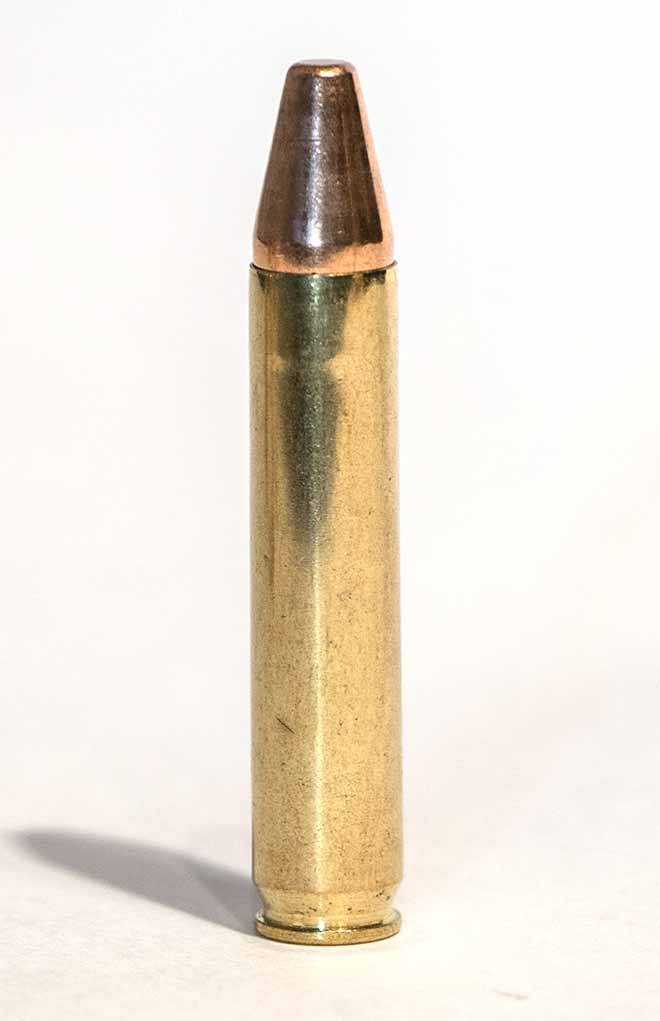
Created specifically for deer hunters in states now allowing straight-wall centerfire rifle cartridges, the .350 Legend is essentially a .223 Remington case with no taper and a .35-caliber bullet. At the muzzle, it can produce more energy than the .223 Remington, .30-30 Winchester and .300 Blackout, and it recoils 20 percent less than the .243 Winchester.
Winchester is offering a wide array of factory loads for the .350 Legend, with bullet weights ranging from 145 to 265 grains. Make no mistake: This is a cartridge designed for deer hunting. Could it be used for other things? Things such as feral hogs? Sure. Personal protection? Sure. Will it find the love and affection of AR-15 aficionados, or will it go the way of the .30 Remington AR? That remains to be seen.
The .450 Bushmaster
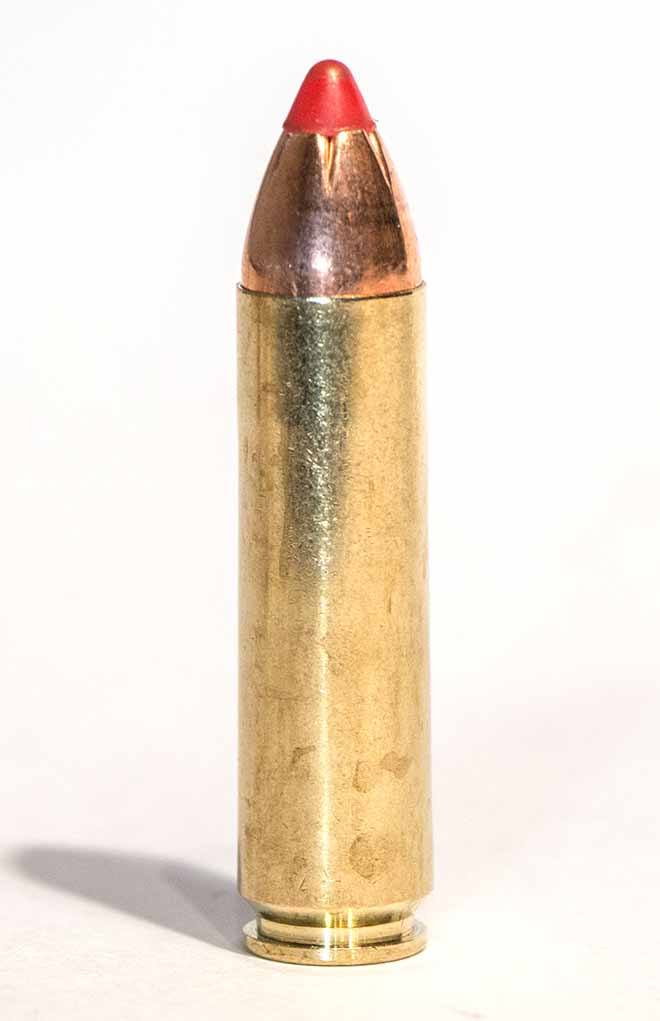
Introduced about a decade ago, it looked as if the .450 Bushmaster was going to be the hottest new thing for the AR-15. It was for about a year. Then, it seemed as if no one cared anymore. It’s a powerful cartridge; it will push a 250-grain bullet to 2,200 fps. But, it has a trajectory like a rainbow, and the recoil will get your attention in a lightweight AR-15. Until last year, it looked as if the .450 Bushmaster was the .450 “Forgotten.”
But then, the same new laws that spawned the .350 Legend brought the .450 Bushmaster back to life. Hunters in states now allowing straight-wall centerfire rifle cartridges for deer are flocking to the hard-hitting .450 — and not just in the AR-15: Several manufactures are offering bolt-action rifles for the Bushmaster, and they’re selling as fast as they can be made.
Make Your Choice
If you’re looking for an AR-15, the best thing you can do is consider the tasks you’ll be asking the rifle to perform. You can never really go wrong with the .223 Remington, unless you’re in a state in which it’s not permitted for big-game hunting and big-game hunting is what you want to do. If that’s the case, the 6.5 Grendel or .300 Ham’r is likely your best option.
For varmints, the .224 Valkyrie is probably the best choice, and if a straight-wall cartridge is what you need, the new .350 Legend might just be the bee’s knees. But here’s the thing: With the AR-15, you can always have multiple upper receivers, which means you can have multiple cartridges at your disposal at all times. That’s the real beauty of the AR-15. It is the most versatile and adaptable rifle ever created.
The article originally appeared in the May 2019 issue of Gun Digest the Magazine.

Next Step: Get your FREE Printable Target Pack
Enhance your shooting precision with our 62 MOA Targets, perfect for rifles and handguns. Crafted in collaboration with Storm Tactical for accuracy and versatility.
Subscribe to the Gun Digest email newsletter and get your downloadable target pack sent straight to your inbox. Stay updated with the latest firearms info in the industry.

![Best Concealed Carry Guns In 2025 [Field Tested] Wilson Combat EDC X9S 1](https://gundigest.com/wp-content/uploads/Wilson-Combat-EDC-X9S-1-324x160.jpg)


![Best 9mm Carbine: Affordable PCCs [Tested] Ruger Carbine Shooting](https://gundigest.com/wp-content/uploads/Ruger-Carbine-Shooting-100x70.jpg)
![Best AR-15: Top Options Available Today [Field Tested] Harrington and Richardson PSA XM177E2 feature](https://gundigest.com/wp-content/uploads/Harrington-and-Richardson-PSA-XM177E2-feature-100x70.jpg)

you forgot the 458 socom
I was looking at this article to try and figure out what kind of plate to get for my child’s “backpack body armor”, have to say: didn’t answer my question at all. Guess a Level 4 plate it is then.
You should be more worried about your kids at school being turned into trannies or groomed to be gay
Does this moronic comment have anything to do with this article? If you think so, please seek professional help
A major oversight by this writer is not one mention of the 25WSSM. Almost 25-06 ballistic out of arln AR15 platform. It’s a true flat shooting mule deer round with range and energy to spare.
One major omission, especially with the popularity of the”other Rifle” and it’s native caliber: the 7.62×39. There are uncountable numbers of us who own and regularly shoot and hunt deer with them. The old issues are the result of using the wrong feed ramps (read barrel extension) with barrels chambered in this caliber. So its either get a properly set up barrel assembly, full upper or open the ramps up until the rounds feed right, its not a big deal. Power-wise the caliber is just a bit stronger than a 30-30, and there are three big-name players making CLEAN hunting ammo in 7.62×39. This is more than the orphaned .30AR has going for it.
Great review article. I remember the .30 Remington flub up, and I agree that it’s a shame that Remington didn’t market the cartridge and the necessary parts changes right. It would truly have given the best of both worlds middle ground for the AR-15 platform. It’s a shame it didn’t become more than a niche cartridge, and an expensive one at that.
While not a cartridge, mentioning of the .223 Wylde barrel change rather than a plain .223 Remington or 5.56 x 45 NATO Chambered barrel, not only allows the safe use of either cartridge, but gives better accuracy in comparison to firing .223 in a 5.56 chamber. Something I wish would have been available when I purchased my first AR years ago (a year or two before Bill Wylde released his modified chamber).
Also the availability of 7.62 x 39 Soviet in AR-15 uppers seems to be on the rise as more upper suppliers are offering that configuration. Ballistically, it falls in that 30-30 range, but does offer the end user the less costly option of cheaper Commblock surplus ammo.
Since your article stands as a very good and concise primer for new and even some older AR-15 owners, it’s a good handout and reference. With the prices of complete uppers dropping by several different manufacturers, it also illustrates why the AR platform is a good choice for a multi purpose firearm for those on limited budgets or limited space and why it’s America’s rifle.
One thing I’ll mention is the safety issue, but a modest priced way to mark/differentiate calibers is to home Cera/Duracote your alternative uppers and components, to avoid using the wrong configuration. I’ve done this on the one .22 Nosler upper and magazines I keep for using on my first AR. Done in Foliage Green, at a glance I know what I need to be running through the gun, especially since I keep the lower and original upper factory black.
Just some thoughts for future updates should you care to use them.
Thank you Mr. Mann for your service to our country and our 2nd Amendment rights.
Mixing up needed components:
Since AR prices have dropped I personally keep my ar’s complete. It has become close to $100 bucks to add a lower and furniture to each complete upper. I don’t play the game of not including a complete bolt/carrier with every upper, it just isn’t worth it for so many reasons, from spare parts to properly broken in and bolt/carrier individually lapped together to bolt lug/receiver also properly wearing into an individual fit. Having Been a gunsmith, I’ve seen more than a few semi-auto rifles develop major feed stopping issues due to simple wear-in problems that caused very expensive repairs due to slight canting of the bolt causing wear in critical areas. In an AR its fairly cheap to replace the upper receiver, bolt, bolt carrier, and barrel extension. But that bolt and bolt carrier are chap insurance to start with.